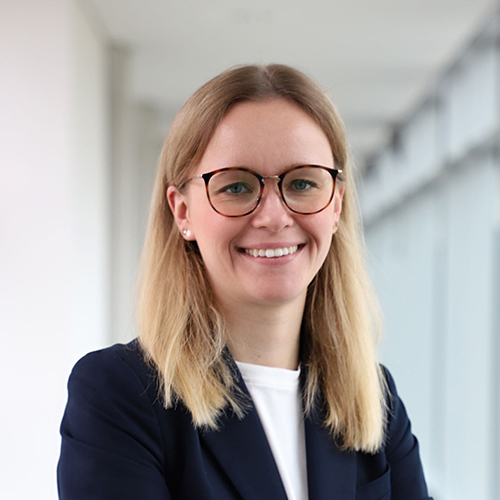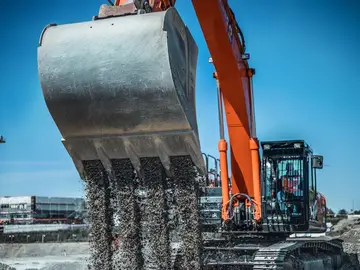Giving gravel a second life: How to protect the environment while constructing excavation pits
Kirchheim bei München, Germany – Concrete is the most widely used construction material in the world. However, it is not sustainable – unless recycled materials are used for its production. In the Rathausviertel district of Kirchheim bei München, excavated gravel was generated by the ton during the construction of excavation pits for a new residential quarter, which is now being reused for concrete production. In this way, the Bauer Umwelt Division of BAUER Resources GmbH is unearthing a new treasure that not only makes a sustainable contribution to a clean environment, but also embraces the philosophy of a circular economy.
Before the valuable resource could be excavated, however, a few work steps were necessary. In the first step, the site was set up: that is, the site boundaries were positioned, access routes created and storage areas were prepared for the excavated material. Then the planning for the excavation pit was drawn up – the centerpiece of the entire project, as Burc Akker, Site Manager from the Bauer Umwelt Division of BAUER Resources GmbH reports. “Particularly when a project needs to be completed in just eight weeks, every movement has to be planned,” he emphasizes. This takes some time at the beginning – but experience shows that this effort always pays off. Next came the gradual excavation of the three excavation pits up to a depth of 3 m. In the process, a total of 38,000 m3 of material was removed and disposed of. The 33,000 m3 of gravel generated here was loaded directly, transported to a nearby gravel plant and treated there so it can be processed into concrete. In comparison, the CO2 emissions and consumption of resources for the production of conventional concrete are immense.
In Germany alone, approximately 27.5 million tons of concrete are produced each year. If just a small portion of this were produced from recycled gravel, concrete manufacturing would be a whole lot more sustainable. Natural raw materials would be conserved and excavated materials would not have to be disposed of. “The excavated gravel is therefore urgently needed and also adds tremendous value to the team’s work on site,” says Sales Manager Thomas Reinthaler from the Bauer Umwelt Division of BAUER Resources GmbH.
Finally, the team from the Bauer Umwelt Division will construct the capping layer and install a king post wall deep in the ground to secure the excavation pit. Once this work is finished, a modern residential quarter with 138 apartments and 28 townhouses will soon enrich the community of Kirchheim bei München.
Downloads
Your Contact

Specialized press Resources, Redevelopment, Environment
